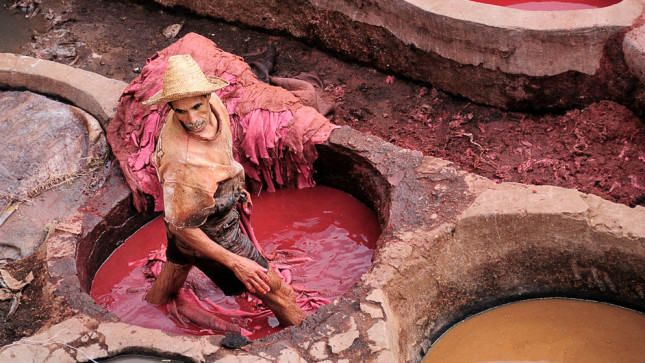In October 2015 MIT published a report called Sustainable Apparel Materials by Randolph Kirchain, Elsa Olivetti, T Reed Miller and Suzanne Greene . The report is crucial in that it highlights the impact of anthropogenic carbon emissions from the textile industry, looking specifically at cotton, polyester, leather & rubber. Gizmodo’s Andrew Tarantola wrote an article titled “How Leather Is Slowly Killing the People and Places That Make It” on the impact of the leather industry in the developing world. Together they provide not only an academic view, but also of the human cost within these industries.
The MIT report highlights that 1/3 rd of total emissions is from this industry and its supply chain. That is just an amazing piece of information.
By 2015, the global apparel industry is expected to produce more than 400 billion square meters of fabric per year, representing nearly enough material to cover the state of California annually. These fabrics will be produced from nearly 100 million tonnes of fiber and filament yarns, about 40% of which are agriculturally derived (i.e., cotton, wool, …) and 60% synthetic (i.e., polyester, nylon, …). (Gugnami and Mishra 2012)
This scale of production directly establishes the scale of the industry’s environmental impact. Although much work still needs to be done to fully characterize the magnitude of the burden, and there is a great range in terms of practices, including firms that are quite responsible. A rough analysis from 2009 estimates that the global industry consumes nearly 1 billion kWh of electricity or 130 million tonnes of coal, making the apparel industry a significant contributor to global greenhouse emissions. (O Ecotextiles 2009)
One key resource utilized by the textiles industry is water. In 2009, the New York Times (reporting on a California study) revealed that several dozen gallons (or more than 400 pounds) of water were required to process one pound of textiles. (Peters 2009) Mapping this consumption rate onto the countries where production is concentrated shows that the industry’s use and discharge rates constitute a significant fraction of available water resources. As an example, in 2009, textile production ranked third among major industries in China in terms of total wastewater discharge, emitting over 2.5 billion tonnes, primarily from the dyeing and finishing steps of manufacture. (IPE 2012)
Even worse is that fact that the countries who are the largest produces of this industry, India, Pakistan, Bangladesh and China all face serious issue of water insecurity.
About me: Sean McClure is a former Senior Advisor at the White House. Sean is currently the Suspension and Debarment Advisor to the Department of the Treasury and with over 15 years of experience working at the White House, Department of the Treasury, USAID, and Department of State. He has traveled extensively to 35 countries in Africa, Asia, Latin America and Europe.



